 This section contains information on specific topics about the Bosch LSU wideband pump cell sensors.
The LSU commercially available range includes the 4.0, 4.2 and now the 4.9 sensors.
Go here for a description of how 5 wire pump cell sensors work.
This section contains information on specific topics about the Bosch LSU wideband pump cell sensors.
The LSU commercially available range includes the 4.0, 4.2 and now the 4.9 sensors.
Go here for a description of how 5 wire pump cell sensors work.
 This section contains information on specific topics about the Bosch LSU wideband pump cell sensors.
The LSU commercially available range includes the 4.0, 4.2 and now the 4.9 sensors.
Go here for a description of how 5 wire pump cell sensors work.
This section contains information on specific topics about the Bosch LSU wideband pump cell sensors.
The LSU commercially available range includes the 4.0, 4.2 and now the 4.9 sensors.
Go here for a description of how 5 wire pump cell sensors work.
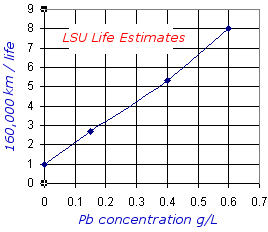
Depending on the lead content of the fuel used, the expected service life time is: (preliminary data)
Extrapolating this Bosch data suggest that at 1.5 g/l the life may be as low as 2,000 km or just 20 hours at 100 km/h. AvGas 100LL has 0.56 g/l Pb, suggesting a sensor life of 200 hours. Compare this to a suggested life of 1,600 hours for unleaded.
Of course there are other contaminants that shorten the sensor's life and they include
Typical LSU Sensor - the 6066 (Bosch part # 0 258 006 066)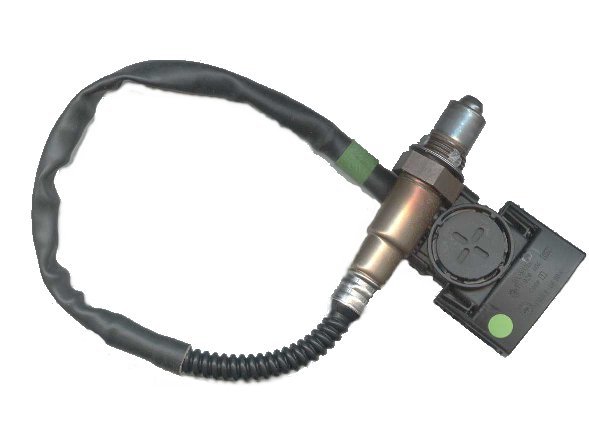
Shown here is the Bosch part # 0 258 006 066 - known as the 6066 sensor (Tech Edge part number [06066]). Images below show the business end of the 6066 sensor after the two shrouds have been removed. Note the largest image clearly shows the small hole from the outside to the sensor itself. |

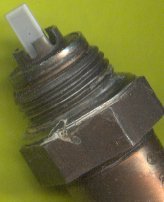
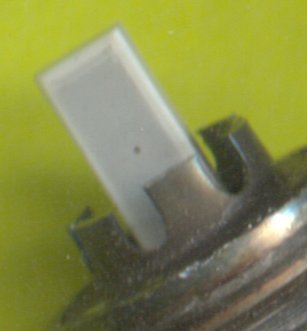
|
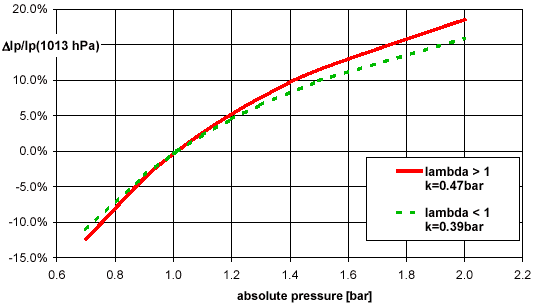
A pressure change of the measured gas gives a deviation of the sensor output signal of:
The factor k is dependant on rich (lambda < 1.0) or lean (lambda > 1.0) and is for the measuring gas from an LSU test bench as described in section 4.2 of the Bosch document Y 258 K01 005 000e (see below):

The image at left is taken from spreadsheet lsuIpVsP.xls that plots the pressure dependency curve shown above right. You can play with the spreadsheet's X and Y axis to get the curves to look like the one shown above, but it's more interesting to look at a small part of the curve to investigate the pressure dependency of Ip in the rich region and how that affects indicated Lambda. Click on the small image if you have not already.
|
Advance LSU specifications and engineering information is available from the Bosch document Y 258 K01 005 000e for the 0 258 007 xxx range of LSU 4.2 sensors.
Here is an informational article about Bosch LSU sensors (oxygen13-17.pdf) that appears to be no longer generally available on the web (as of Feb. 2005). That article was originally available from a number of sources and is attributed to Service Tech Magazine May 2001. This article is made available without permission from the SAE. Here's more information about the Service Technology Program Office (STPO) of the SAE).
Need more info? Ask us! see contact link(s) below.